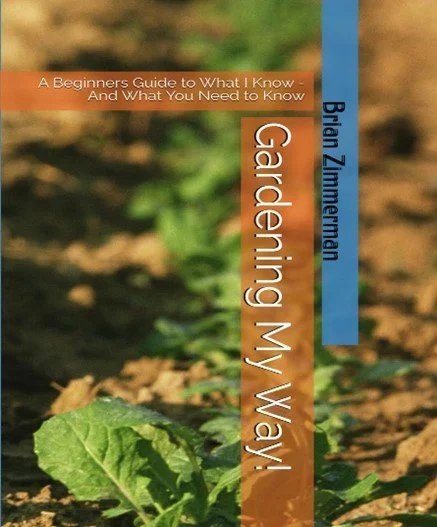Get Into Gardening!
by Brian Zimmerman
A garden has beauty and color that transcends the effort you put into it. The sun shining on your face, the smell of the soil, the beauty of the flowers and the feel of life around you paint a picture on your soul. It is an amazing feeling when you know you planted seeds that bring so much pleasure and purpose to your life and the world around you.
The time to start is now! Gardening provides multiple health benefits: mental, physical and environmental, including the pleasure of eating fresh organic foods and saving money. And, it’s fun and relaxing, too!
A few steps to starting a successful garden
To help you decide on the first few steps, you need to consider how much and what you want to grow. Think about what you like to eat. Then figure out the amount of time you want to dedicate to it. Once this is done you can move onto the next steps.
Type of garden
The first step is to decide what type of garden you want and how big you can handle. A garden can be as small as a few pots on your deck, a raised bench in your yard or a 10 ft by 10 ft in ground patch in the yard. Each one has its advantages.
Raised benches are soil filled boxes. They can be placed anywhere in your yard. You can start with lettuce or greens in the spring and move to summer crops after they are harvested. It is an easy and convenient way to start.
Inground traditional gardens can supply vegetables, flowers and fruit but can be more time-consuming. This type of garden will give you vegetables throughout the season. The effort will be well worth it.
Elevated gardens have the same advantages as an inground garden but can cost more because you are buying or constructing a structure to hold your soil. You can expand to more until you are filling your yard with them.
Choosing a Location
There are certain things you need to look for when planning your garden. The following list breaks them down. Take these factors into account when looking at your yard.
The Sun is very important. You need to choose a location that gets at least 6 hours of sunlight per day but 8 hours plus is best.
Good soil: Soil is key to vegetable production and should be rich loamy and well drained, have proper pH, with adequate organic matter. By adding compost, you can start transforming your soil. A soil test is important to determine the pH of your soil.
Shade: trees, shrubs and sun direction need to be considered throughout the growing season.
Preparing your ground
If you are using anything other than an inground method, you will need to buy good soil to grow your plants. Many new gardens are going to be planted in a former lawn so will need to terminate your grass.
Inverting the soil is what I prefer. It is quick, easy and great exercise. Map out your perspective area and turn the soil over. Once turned let it sit a few days and rake it smooth. This is the time when you can modify your soil by adding the lime or organic matter for a better growing medium.
Solarize the area is when you use thick clear or black plastic to burn the grass. It needs to be left on until you are sure the sod has been killed (about 4 to 6 weeks). After the grass is killed you can either dig your plants in or add soil on top to plant.
Mulch with a base of cardboard or newspapers to smother and kill the grass then layering compost, topsoil, straw, mulch, and organic matter on it to use as a planting surface.
Planting
No matter what type of garden you choose the timing is the same. There are two kinds of vegetables, cool season and summer. For beginning gardeners, you should start with easy to grow vegetables. You can start them in the house under a grow light, direct seed them into the soil or buy them from the local nursery. There are some great charts describing this. Some of the easiest vegetables and flowers to grow are lettuce, beets, radishes, beans, zucchini, cucumbers, tomatoes, peas, sunflowers, zinnias, and cosmos.
Cool season vegetables that can take the early spring weather are lettuce, radishes, spinach, kale, broccoli, and carrots can be planted directly into the prepared soil as early as mid-April in many regions. I like to start them a couple weeks before planting them in the garden.
Summer vegetables can be planted when the soil temperature reaches 60 degrees. You can check the local extension service or seed company websites for proper planting dates for your area. Vegetables in this category are tomatoes, cucumbers, peppers, eggplant, zucchini, or any other of the usual suspects.
Summer care
Things look great! You are a happy gardener. Preparing for the rest of the season is important. Watering the garden with an inch a week, fertilizing with a slow-release fertilizer, mulching with grass/straw or wood chips will make a difference between success and failure. Gardening is said to be easy to start but takes a lifetime to master. Get out and get started — you won’t regret it!
Brian Zimmerman
Brian Zimmerman is an author and consultant living on Long Island. He has worked as a conservationist, farmer, and an administrator in all levels of government service. Brian cares about the future of the food system; his book, Gardening My Way! is a simple guide to gardening environmentally. Contact him through www.whole_yard_consulting.com


